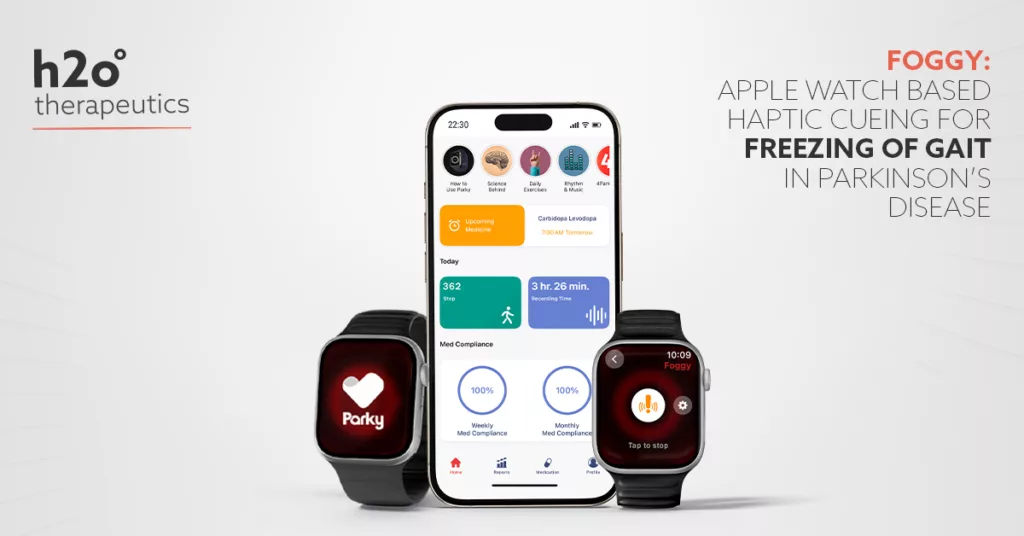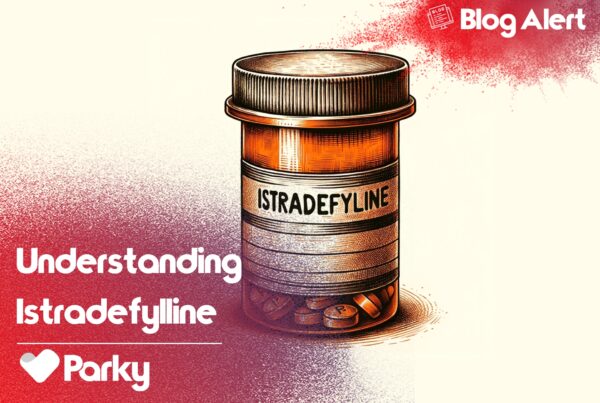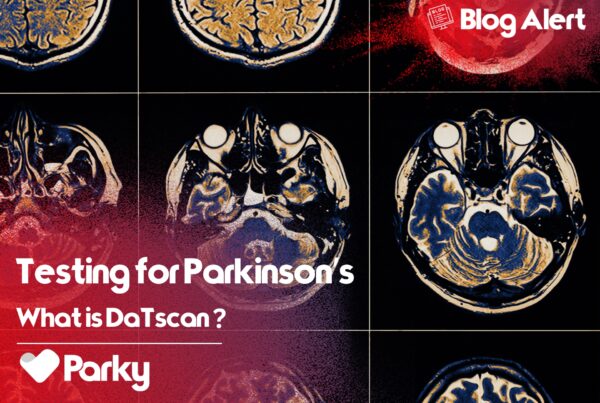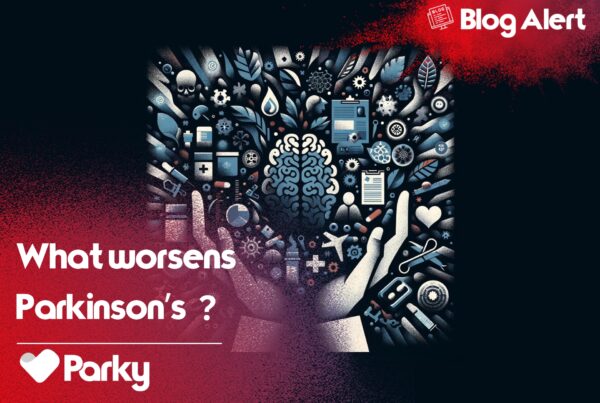h2o Announces FDA Listing of Apple Watch-Based Cueing Feature ‘Foggy’ for Freezing of Gait in Parkinson’s Disease

Parkinson’s disease presents a myriad of challenges for patients and caregivers, with freezing of gait (FOG) ranking among the most debilitating symptoms. Addressing this issue head-on, h2o therapeutics has introduced Foggy, an innovative haptic cueing solution integrated into the Parky app for Apple Watch. Foggy, available by prescription as a Class II Medical Device cleared by the U.S. Food and Drug Administration (FDA), represents a significant advancement in Parkinson’s care.
What is Foggy?
Foggy is a cueing solution designed to assist individuals experiencing freezing of gait, a common and distressing symptom of Parkinson’s disease. Leveraging the Taptic Engine in Apple Watch, Foggy delivers vibrotactile stimulation to provide users with real-time cues during episodes of FOG. These cues serve to help bypass the disrupted internal cues in the brain, facilitating smoother gait initiation and movement.
How is Foggy Used?
Using Foggy is simple and user-friendly. Once prescribed, users can access Foggy through the Parky app on their Apple Watch. By tapping a designated complication on the watch face, users initiate haptic feedback, which provides them with the sensory cues needed to overcome freezing episodes and resume walking normally.
How Does Apple Watch Integration Make a Difference?
The integration of Foggy into the Parky app for Apple Watch offers several key advantages. Firstly, the ubiquity of Apple Watch makes Foggy accessible to a broad user base, allowing individuals to conveniently access cueing support directly from their wearable device. Additionally, the discreet nature of Apple Watch enables users to receive cues discreetly and unobtrusively, minimizing cognitive load and promoting natural movement.
Prescription-Based Accessibility
Foggy is available by prescription under Parky app. Healthcare providers can easily prescribe Parky online via Provider Portal.
Why is Cueing Important for Freezing of Gait?
Cueing strategies have shown promise in managing freezing of gait by providing external stimuli to supplement impaired internal cues. These cues help trigger automatic movements and guide individuals through challenging gait situations. Foggy’s haptic feedback serves as a discreet yet effective cueing mechanism, empowering users to regain control of their mobility and reduce the risk of falls.
Scientific Rationale for Cueing
Cueing leverages the brain’s capacity for sensorimotor integration, tapping into external stimuli to bypass disrupted internal cues and facilitate smoother gait initiation and execution. Research in neuroscience has shed light on the intricate neural circuits involved in gait control, highlighting the role of sensory feedback in modulating locomotor patterns. By providing rhythmic, auditory, visual, or tactile cues, cueing techniques help synchronize motor output and enhance movement coordination, particularly in individuals with Parkinson’s disease.
Historical Perspective
The use of external cues to ameliorate gait disturbances predates modern neuroscience, with historical accounts dating back centuries. In ancient civilizations, rhythmic music and dance were employed therapeutically to alleviate motor symptoms and promote mobility. Fast forward to the 20th century, pioneering clinicians like Dr. James Parkinson himself recognized the potential of auditory cues in mitigating gait abnormalities, laying the groundwork for contemporary cueing interventions.
Scientific Advancements
Advancements in neuroimaging and computational modeling have deepened our understanding of the neurophysiological mechanisms underlying cueing’s efficacy. Functional imaging studies have elucidated the neural substrates implicated in cue processing, revealing activation patterns within sensorimotor networks and basal ganglia circuits. Computational models have further elucidated the temporal dynamics of cueing effects, elucidating how rhythmic stimuli entrain motor oscillations and enhance movement initiation.
What is next?
Foggy not only provides immediate support but also acts as a tool for collecting real-world insights into how individuals respond to cueing. This data will inform the development of personalized interventions, precisely meeting each person’s needs.
Looking forward, Foggy’s launch signals just the beginning of our journey. At h2o, we’re committed to exploring new avenues, and collaborating with the Parkinson’s community to empower individuals to live their lives with confidence and independence. This collaboration extends to patients, caregivers, researchers, and industry partners in the pharmaceutical sector. By fostering these partnerships, we aim to leverage collective expertise and resources to drive meaningful advancements in Parkinson’s care. Stay tuned for more updates and innovations as we continue to advance in Parkinson’s disease management with Parky and Foggy.





